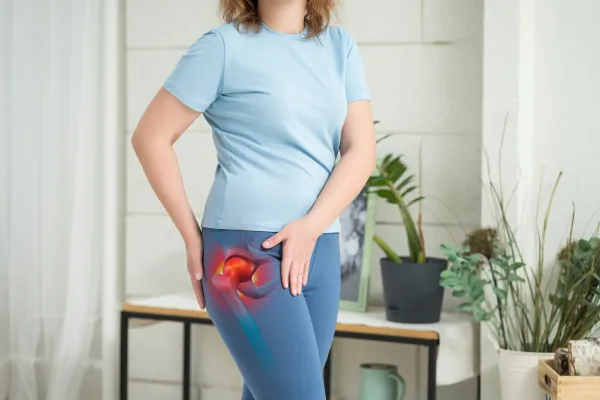
Hip Bursitis vs. Hip Tendinopathy: Know the Difference
If you’re experiencing ongoing pain on the outside of your hip, it could be due to either hip bursitis or hip tendinopathy—two of the most common causes of lateral hip discomfort. Although the symptoms can feel quite similar, these conditions are distinct in nature and require different approaches for effective treatment.
At Peak Physiotherapy Clinic in Galway, we help patients get to the root of their hip pain with accurate assessments and targeted treatment plans. Here’s what you need to know to better understand each condition—and how physiotherapy can help.
What Is Hip Bursitis?
Hip bursitis, also referred to as trochanteric bursitis, occurs when the bursa—a small fluid-filled sac that cushions the outside of the hip joint—becomes inflamed. The bursa sits over the bony part of the hip known as the greater trochanter, and when irritated, it can cause sharp, sometimes burning pain.
People with hip bursitis often report pain on the outer side of the hip, especially when lying on that side at night. Activities like climbing stairs, walking for long periods, or standing still can also aggravate the discomfort. It may come on suddenly, particularly after a fall or from repeated pressure on the area.
What Is Hip Tendinopathy?
Hip tendinopathy, on the other hand, involves the degeneration or irritation of the tendons, usually of the gluteus medius or minimus muscles. These tendons are responsible for stabilising the hip during movement. When overused or strained, they can become damaged and painful over time.
Unlike bursitis, tendinopathy usually develops gradually. It often causes an aching or sharp pain on the side of the hip, which may also radiate into the buttock. You might notice discomfort during activities that involve load-bearing on one leg—such as walking, running, or climbing stairs. People with weak glute muscles or poor movement patterns are especially prone to this condition.
So, What’s the Difference?
While both conditions affect the side of the hip, there are a few key differences:
The source of pain: Bursitis involves inflammation of the bursa, while tendinopathy is related to tendon damage or overuse.
Pain pattern: Bursitis pain is often linked to pressure or touch—like lying on your side or pressing the outer hip. Tendinopathy pain is more activity-driven, particularly during single-leg movements.
Onset: Bursitis tends to appear more suddenly, sometimes after trauma. Tendinopathy usually builds up slowly due to repetitive stress.
Because symptoms can overlap, getting a professional assessment is the best way to ensure you’re treating the correct issue.
How Physiotherapy Can Help
At Peak Physiotherapy Clinic, we take a holistic, hands-on approach to identifying and treating hip pain, whether it’s bursitis, tendinopathy, or something else entirely.
Here’s how we support recovery:
1. Thorough Assessment
We begin by pinpointing the exact source of your hip pain through detailed movement testing and discussion of your symptoms and lifestyle.
2. Manual Therapy
Our physiotherapists use soft tissue massage, joint mobilisation, and other hands-on techniques to relieve tension, reduce inflammation, and restore normal movement.
3. Tailored Exercise Programmes
For tendinopathy, specific strengthening exercises are key to rebuilding tendon health. For bursitis, we may start with gentle mobility work before progressing to strengthening, once inflammation settles.
4. Education and Load Management
We guide you on safe ways to move, exercise, and avoid aggravating your condition during daily activities.
5. Advanced Techniques
Depending on your case, we may incorporate dry needling, shockwave therapy, or kinesiology taping to enhance pain relief and promote healing.
Don’t Wait for It to Worsen
If you’ve been living with hip pain—especially on the outer side—it’s important to get an accurate diagnosis before the problem becomes chronic. Early intervention makes a big difference in both recovery time and long-term results.
At Peak Physiotherapy Clinic in Galway, we’re here to help you move better, feel stronger, and get back to the activities you love—pain-free.



